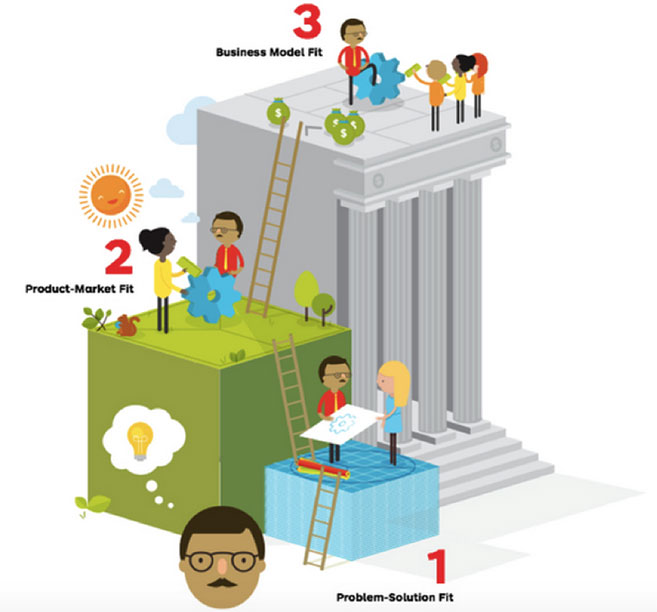Do you have a great product or business idea? Well, it is very likely that your idea is going to fail.
Now before you leave this blog in a fury, stop and think. I’m sure you’re wondering, ‘Wait, why would my well thought-out product and business model fail, especially after I’ve burned so much energy and time working through each feature and business model element?’
However brilliant your idea looks on paper, your product and your business model will remain a set of guesses of how YOU think you can create value for customers and support your company until they are exposed to their real judges: your customers.
In other words, you might have a visionary business idea but you could also be too passionate about it to realize that customers won’t care about what you offer them. It’s the trap into which most entrepreneurs fall: offering something that customers don’t want is the top cause of failure amongst startups. The risk of failure is at its highest level without strong evidence from customers that your idea is going to work.
I strongly recommend that you apply the Customer Development approach pioneered by Steve Blank during the first stage of development of your idea in order to decrease the risk of being wrong about it. The Customer Development approach consists of identifying the hypotheses in your business model and product (points you aren’t sure of), and testing if they are valid or not. You will learn from customers and from tangible market insights in the field whether or not your hypotheses are valid.
If your hypotheses are invalid, you should go back to your idea, tweak it, identify new hypotheses around your improved idea, and get back to testing in the field. This iterative back-and-forth between learning from customers and improving your product and business model will last until you have achieved three kinds of fit.
The execution of your idea can start only once you have achieved these three types of fit:
- Problem-Solution Fit The problem-solution fit occurs when you have received evidence from customers that you have correctly identified their needs, the pains they experience when fulfilling those needs, and the positive outcomes they would like to experience when doing so. At this stage, you have increased your understanding of what your customers want or don’t want, and have provided strong evidence that the problem you’re trying to tackle exists.
- Product-Market Fit The product-market fit happens when you have validated your hypotheses around the product that could fulfill your customers’ needs, and their preferred features. At this point, you have tangible proof that customers want your product and that it fulfills their needs. You have ensured that customers are willing to pay for what you offer. But don’t rejoice yet! Offering a product that customers want and are willing to pay for doesn’t guarantee that your business is going to succeed!
- Business Model Fit Even if you validate that customers care about your product, you’re still one step away from achieving the three kinds of fit and being able to execute your ideas. Business model fit is required to be able to grow your company and cover the costs of creating and offering products to customers. The risk of failure will dramatically reduce once you prove that you’ll generate sufficient revenue to cover your costs, be able to scale up your business and that your venture will be sustainable long-term.
The success of your ideas should never rely on your intuitions alone! Once you have nailed your idea on paper, don’t fall into the trap of rushing into execution. Make sure you achieve these three kinds of fit and verify your hypotheses to create a product and business model that have been validated by the market. Once you have achieved Business Model Fit, you will have minimized the risk of failure by testing in the field and collecting hard facts and evidence that your idea is going to succeed.
Nabila Amarsy is a writer and business model tool builder for Strategyzer.
Image from Value Proposition Design by Osterwalder, Pigneur, Smith & Bernarda
